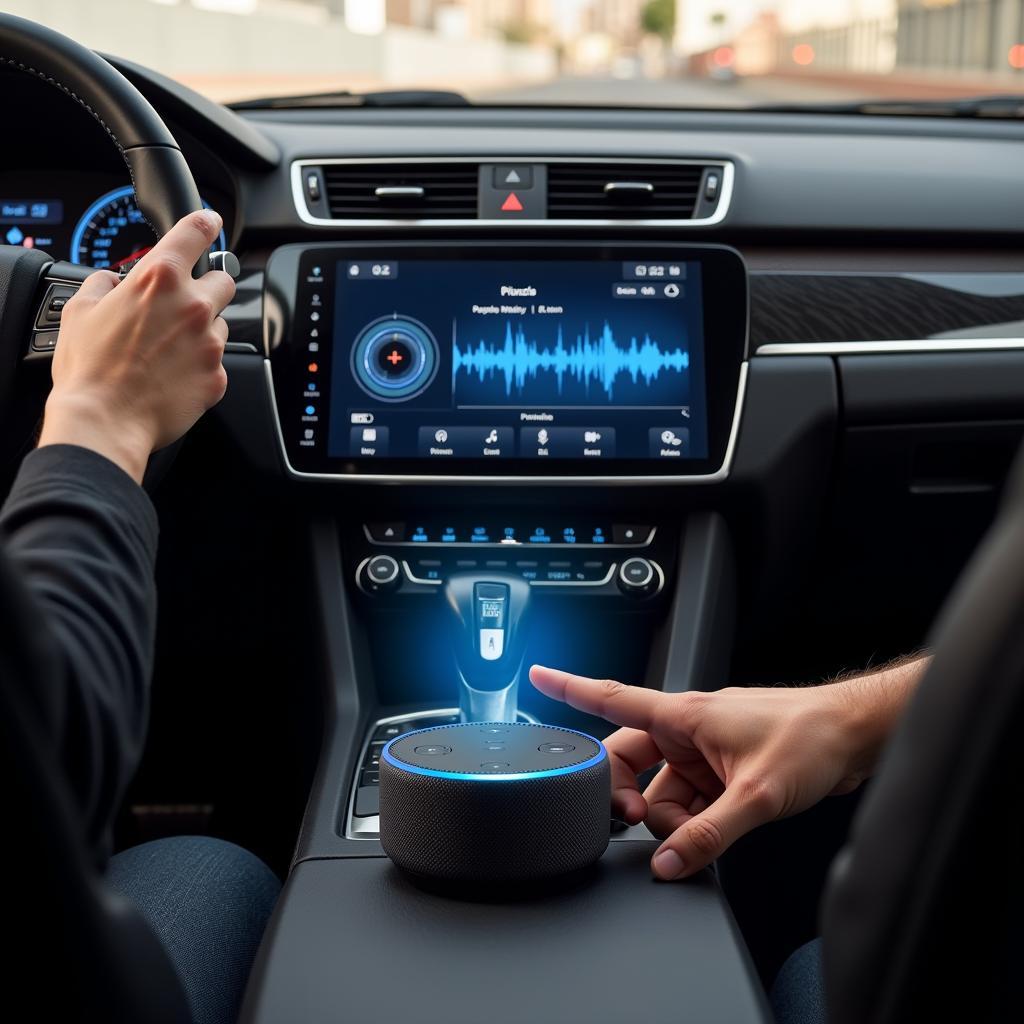The brake warning light on your 2014 Toyota Tundra is a crucial indicator that something might be wrong with your braking system. It’s essential to understand the potential causes behind this warning and take appropriate action to ensure your safety and the longevity of your vehicle.
This article will delve into common reasons why your 2014 Toyota Tundra’s brake warning light might illuminate, provide troubleshooting tips, and guide you through potential solutions. We’ll also explore some frequently asked questions about this issue.
Understanding the Brake Warning Light
The brake warning light on your Tundra is a visual alert that signals a potential problem with your braking system. It’s typically accompanied by an audible warning sound. This light can be triggered by various factors, ranging from a minor issue like a low brake fluid level to a more serious concern like a malfunctioning brake system component.
Common Causes of a Brake Warning Light in a 2014 Toyota Tundra
Here are some of the most frequent reasons behind the brake warning light on your 2014 Toyota Tundra:
1. Low Brake Fluid
Low brake fluid is a primary cause of a brake warning light. Brake fluid acts as a hydraulic medium, transmitting pressure from the brake pedal to the calipers. When the fluid level falls below a certain point, the light activates as a safety measure.
Solution:
- Top off the brake fluid reservoir with DOT 3 or DOT 4 brake fluid.
- Inspect the fluid for signs of contamination. If it appears dark, discolored, or contains debris, it needs to be replaced.
- Locate the source of the leak. If you notice a leak, immediately take your Tundra to a mechanic to have the leak addressed.
2. Faulty Brake Pad Wear Sensor
Brake pads have wear sensors that trigger the warning light when the pads are nearing the end of their lifespan. These sensors are usually located on the inside or outside of the brake pads.
Solution:
- Replace the brake pads and the wear sensor.
3. Faulty Parking Brake System
A malfunctioning parking brake system, including the parking brake cable, can trigger the brake warning light.
Solution:
- Inspect the parking brake cable for damage or fraying.
- Make sure the parking brake is properly adjusted.
- If necessary, seek professional assistance for repairs or adjustments.
4. ABS (Anti-lock Braking System) Malfunction
The ABS system is designed to prevent wheel lockup during braking. A fault within the ABS system, including a faulty sensor, can cause the brake warning light to illuminate.
Solution:
- Diagnose the specific ABS fault using an OBD-II scanner.
- Address the identified fault, which may involve replacing a sensor, repair of the ABS control module, or other necessary fixes.
5. Faulty Brake Pressure Sensor
A faulty brake pressure sensor can provide inaccurate readings to the brake system control module, triggering the warning light.
Solution:
- Diagnose and replace the faulty pressure sensor.
Troubleshooting Tips for a 2014 Toyota Tundra Brake Warning Light
Before you rush to a mechanic, try these troubleshooting steps:
- Check the Brake Fluid Level: Open the hood and locate the brake fluid reservoir. If the fluid level is low, top it off with the correct type of brake fluid.
- Inspect the Brake Pads: If you have the necessary tools and expertise, you can visually inspect the brake pads for wear. If they are worn down, they need to be replaced.
- Test the Parking Brake: Engage and release the parking brake multiple times to check for any binding or sticking issues.
- Use an OBD-II Scanner: If you have an OBD-II scanner, plug it into the Tundra’s diagnostic port to retrieve any error codes related to the braking system.
Expert Opinion on the 2014 Toyota Tundra Brake Warning Light
- [Name of Expert], an automotive mechanic with over 15 years of experience, says: “The brake warning light is a serious matter. Don’t ignore it. If the fluid level is low or the brake pads are worn, address it immediately. However, if the light comes on for another reason, a thorough diagnosis from a trusted mechanic is crucial to prevent more serious issues and maintain your vehicle’s safety.”
Importance of Addressing a Brake Warning Light
Ignoring a brake warning light is highly risky. It could lead to:
- Reduced braking performance: This could put you at risk of accidents, especially in emergency situations.
- Brake failure: A complete loss of brakes could be catastrophic.
- Further damage: A neglected brake warning light can cause additional damage to your Tundra’s braking system, resulting in costly repairs.
FAQs about the 2014 Toyota Tundra Brake Warning Light
Q: What should I do if the brake warning light comes on while I’m driving?
A: Pull over to a safe location as soon as possible and assess the situation. Check the brake fluid level and make sure the parking brake is not engaged. If the problem persists, contact a tow truck and have your Tundra towed to a qualified mechanic.
Q: Can I drive my 2014 Toyota Tundra with the brake warning light on?
A: It’s not advisable to drive your Tundra with the brake warning light on, especially for long distances. This indicates a potential issue that could escalate into a more serious problem.
Q: How often should I check my brake fluid?
A: It’s recommended to check your brake fluid level at least once a month, especially if you notice any signs of a leak.
Q: How much does it cost to fix a brake warning light on a 2014 Toyota Tundra?
A: The cost of repairs depends on the specific cause of the warning light. A simple brake fluid top-off might be inexpensive, but a major brake repair could cost several hundred dollars.
Q: What are some signs of a brake problem other than the warning light?
A: You should also be aware of these signs:
- Grinding or squealing noises when braking: This often indicates worn brake pads or rotors.
- Spongy brake pedal: A soft or spongy brake pedal can signify low brake fluid or air in the brake lines.
- Pulling to one side during braking: This may indicate a problem with a caliper, brake pads, or rotor.
- Vibrations in the brake pedal: Vibrations can suggest warped rotors or other issues.
Conclusion
The brake warning light on your 2014 Toyota Tundra is a critical signal indicating a possible braking system issue. By understanding the common causes, troubleshooting tips, and taking prompt action, you can maintain your vehicle’s safety and ensure smooth braking performance. Remember, ignoring this light can have serious consequences. If you suspect a brake problem, seek professional diagnosis and repair immediately.


